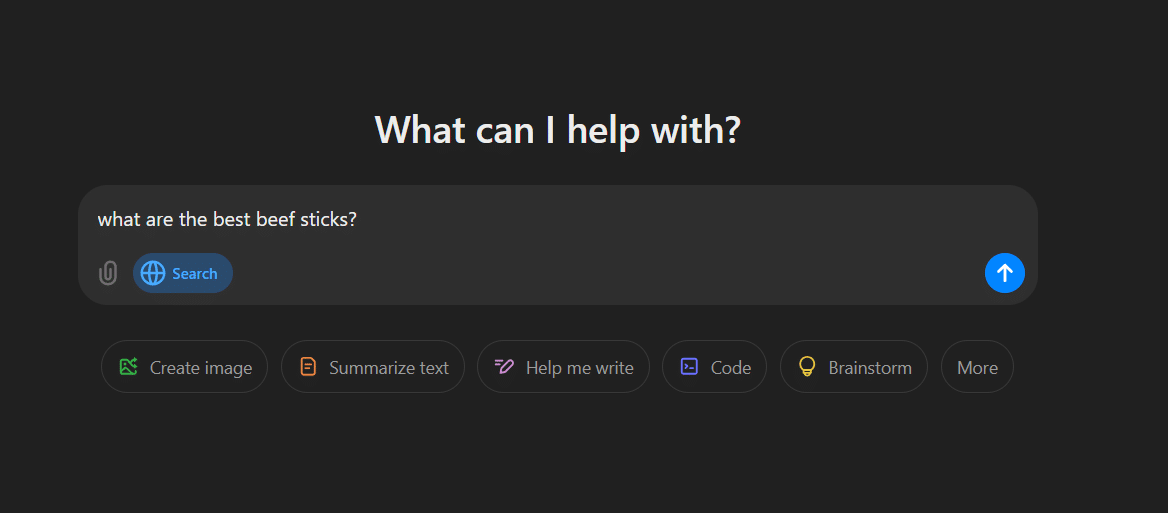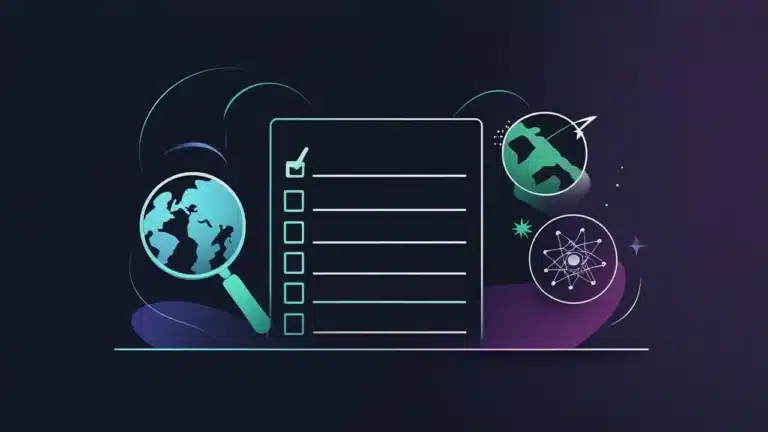Last week on Friday I got my normal nerdy newsletter from a trusted source and it changed how I do my job.
Not my average Friday I assure you.
This publication shares a roundup of links I normally get for interesting developments in AI/ML technologies. But this time, I got something I had no idea was coming.
ChatGPT search had launched.
I had used Bing CoPilot. I had used SearchGPT. I even used some weird chrome extension someone made almost two years ago to try and integrate old search results.
But this, this seemed different. So I did what I always do in these situations when I come across a new technology.
I clicked through to the announcement, pulled up ChatGPT, and searched for some advice about food that I want to eat.
Let me take you on a journey of what I found and what my thoughts are going forward.
Overview of ChatGPT search
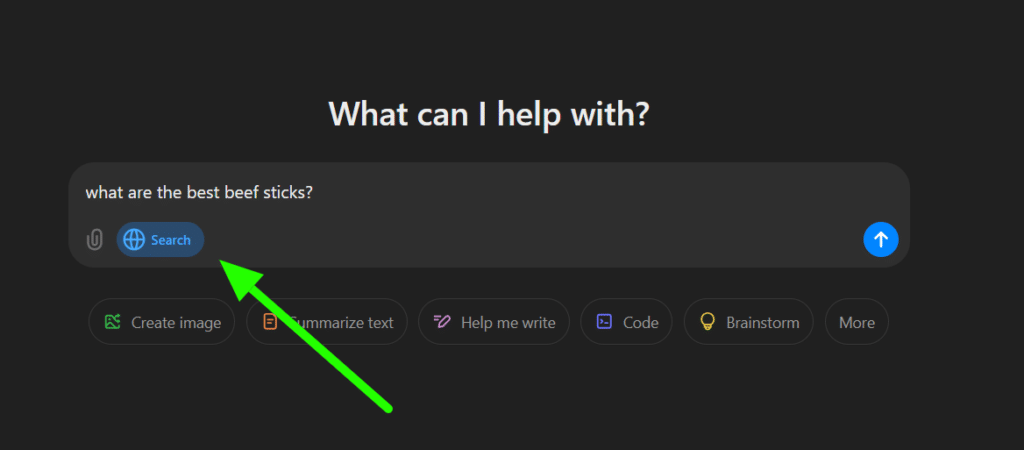
So…what is ChatGPT search?
ChatGPT search is a recently released update to ChatGPT’s core functionality that gives users the ability to quickly get answers directly from search engine indexed content.
OpenAI announced this on their company website on October 31st, 2024 and the world went nuts.
Myself included.
You will be able to see this functionality on both mobile and desktop apps, as well as the web version of the app.
It isn’t available to free users just yet, but if you’re a ChatGPT Plus or Team member, you should have access. For the rest of you, it will be coming out “over the coming months”.
Love the specificity here.

How ChatGPT search pulls in data
Probably mostly from Bing and a few whales (publishers)
OpenAI claims that the results for this new feature come from “third-party search providers, as well as content provided directly by our partners”
My gut instinct is that their responses are sourced primarily through Bing Search data, since Microsoft is their largest investor.
With help from a few large publishers when relevant, such as The Atlantic and The New Yorker. They have a growing list of partnerships with these brands to reference them when it makes sense.
One example of referencing their partners directly was brought to my attention by Garrett Sussman on Linkedin (who’s great btw. If you don’t follow him, you should).
In a post he mentioned that he used ChatGPT Search for some updates on the 2024 election. After clicking on one of the example searches “Election Results 2024”, he got a response that linked to two of the publishers.

Fascinating.
I’m not sure what all of the criteria for these direct mentions are, but I suspect that more ChatGPT Search results will highlight them as the brand partnerships continue.
Interestingly enough though, they do not mention any other partners by name other than bing in their help article. I searched through their own privacy policy documentation but couldn’t find any specific references.

Sources are cited
What’s cool about this new feature is that you get access to the sources by name in a quick blurb and when you hover over the website name, you get:
- Title: This appears to be directly sourced from the title tag element within the content.
- Description: This appears to be a summary of the meta description and content overall to fit into the ChatGPT repsonse blurb window.
- Date: This appears to be the date the content was published.
- Image: Pulled in directly from the page OR the original image if it’s a linked or remixed image.
If you click the source name instead, it takes you directly to the source content.
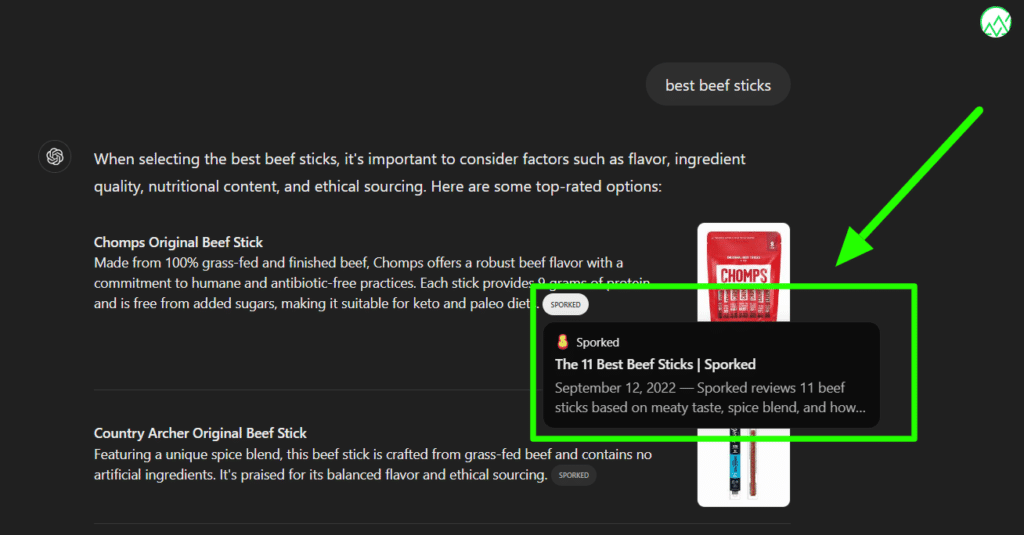
How to rank well in ChatGPT search
I’m including this because only two days after the launch of ChatGPT search i’ve already seen articles and videos from influencers describing their full proof plans for you to “rank” in ChatGPT search.
My guess is that these folks did a few different searches through the new feature until they found one that resulted in their name showing up on a commercial intent search and then took a screenshot to make themselves look good.
If we want to shift the conversation away from gimmicks for clicks, and more towards big brain thinking, here’s what I would recommend you do in order to show up in ChatGPT search:
The exact same best practices that have. been.around.for.awhile.now.
Seriously. What’s going to get you included in the ChatGPT search results (that pull in from Bing Search) are the same that Google and Bing have been saying for years.
Create unique, relevant, and interesting content that solves a need that your target audience has
Stick to the fundamentals people. Produce content that genuinely addresses the pain points of your B2B audience.
Think in terms of buyer enablement—resources like detailed guides, case studies, and problem-solving blog posts that are packed with insights and practical solutions.
The goal is to create content that your ideal prospects want to bookmark, share, and reference when making decisions. No matter what stage of their buying journey they were at when they found you.
Gain trust with users and search engines by getting people to mention your brand more online
Focus on strategies like publishing research that industry peers will reference, guest posting on high-authority websites, and collaborating on content with complementary brands.
The goal isn’t just backlinks for the sake of SEO; it’s about earning genuine endorsements and mentions that make your brand part of the larger industry conversation.
Co-marketing partnerships and media features will signal to search engines (and Bing/ChatGPT) that your content and expertise are worth amplifying.
Design a frictionless and engaging experience throughout your website
Your site should be a conversion-driven playground, not a maze.
Optimize load times, simplify your navigation, and make sure your content is structured for easy scanning (think subheaders, bullet points, and clear calls to action). Especially on mobile, which yes, most people do use. Even in B2B.
A well-designed user experience not only keeps visitors engaged but also signals to search engines that your site is worth serving up to users, ChatGPT included.
Make it easy and simple for every search engine to find, index, and understand your content
You had to know I was going to say this but…implement solid technical SEO practices.
This means having an XML sitemap, using structured data to make your content machine-readable, and maintaining clean, organized URLs.
Ensure all your pages are indexable and regularly audit for broken links or crawl errors. When search engines can easily parse and categorize your site, your chances of ranking—whether in traditional or AI-driven search—skyrocket.
Those are the things. Those will help you build topical authority, build the strength of your brand/domain, keep website visitors on your site, and once you actually help them, convince them to reach out to take the next step when they’re ready.
Look, even if there was some secret magical formula to ranking on SearchGPT, the source being cited still will lead to your website content.
So if it doesn’t have those considerations incorporated, it won’t even matter because your website visitors won’t convert anyway.
Moving on.
What SEOs and B2B companies should do instead
I believe that AI/ML tools have and will continue to dramatically impact the strategies that SEOs use to be successful.
This update is just one of many of new technologies removing the familiar “10 blue links” SERP that some folks are still clinging onto with dear life.
Searchers and buyers are sick of overly optimized, robotic, boring, and not useful content taking up their time. It’s not only the technology that is driving change in the search results, it’s the preferences of your audience as well.
You can tell given the rise of folks looking to augment their searches with “Reddit” where they are looking for opinions from people they can trust without an alterior motive or who aren’t trying to treat the as a “click” or “traffic”.
This is an overview from Google trends of total searches using the term “Reddit” since 2004. It’s not a perfect analysis of other queries augmented with the term, but it’s helpful to see the growth and how it’s not slowing down anytime soon.
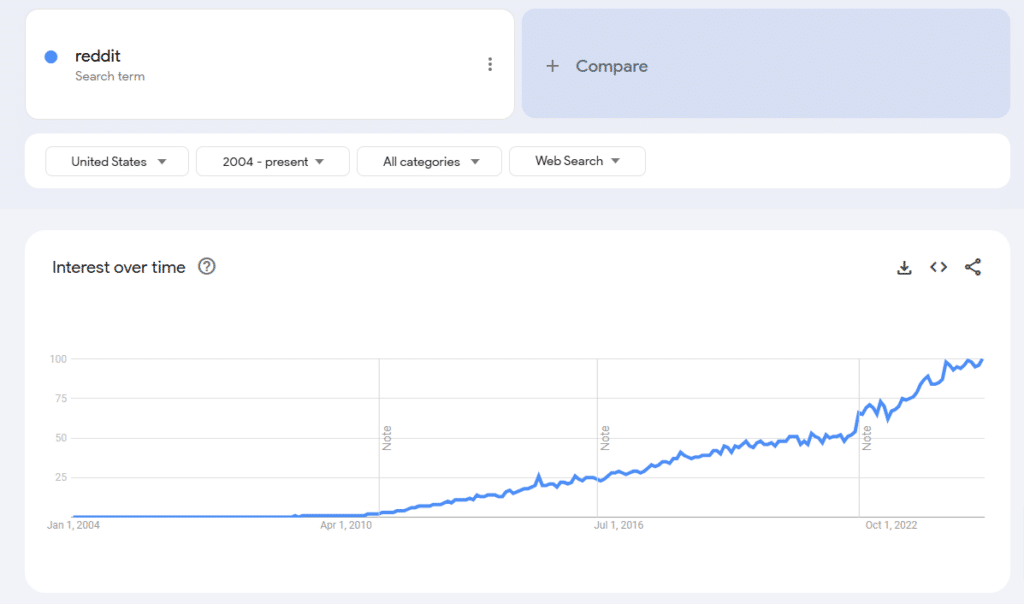
If you’re not seeing the writing on the wall, I cannot help you.
However, if you’re like me and always looking to learn, adapt, and change for the better, here are a few tactical things you can do as more changes unfold.
1. Analyze Referral Data
Dive deep into your referral data using tools like GA4, Microsoft Clarity, or your go-to attribution software. Identify the sources driving traffic and, more importantly, understand what users are doing once they arrive. This insight is the foundation of adjusting your strategy.
2. Experiment Without Boundaries
Set aside your marketing hat and become a user. Seriously, no strategic thinking or KPI-focused mindset—just pure exploration. This type of play can uncover unexpected insights and user behaviors that even the best analysis can’t.
3. Deconstruct AI’s Mechanics
Study how AI models draw their conclusions. Click through, investigate those references, and soak in the insights from industry experts. The better you understand the inner workings, the more effectively you can integrate these tools into your strategy.
4. Stay Rational (AI Isn’t an Apocalypse Catalyst)
We’re not on the brink of a robot uprising, nor is AI a passing craze. Approach AI with cautious optimism. Be open to evolving your tactics while staying level-headed.
Need help? Reach out for a strategy session
If you need helping navigating what this change means for your B2B company’s organic growth strategy, you’re not alone.
Reach out to me anytime for a free strategy session.
I’m always happy to help.

